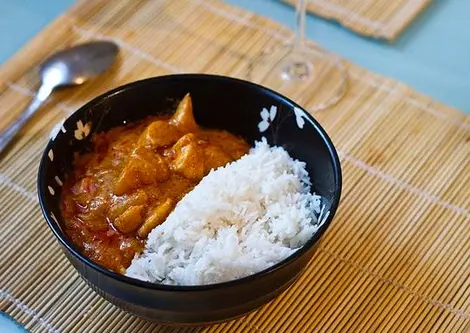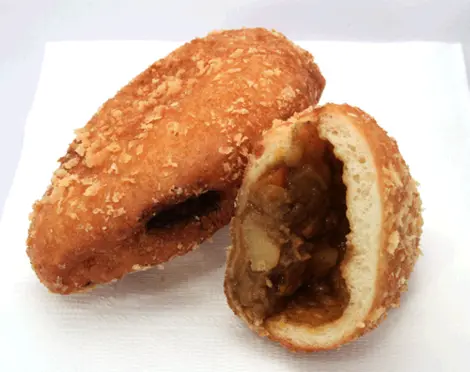Japanese curry カレー
Curry with a twist
Curry is a culinary institution in Japan. But its fans are often unaware of its foreign origins: it was the British who made it popular in the archipelago.
Curry (pronounced kare) is a popular dish in Japan, most often consumed with rice: called kare raisu. But you can also enjoy kare udon (thick wheat noodles in curry sauce) or kare pan (a sort of savoury curry doughnut).
The kare raisu is a thick curry sauce, garnished with pieces of vegetables and/or meat , served with rice and often a piece of meat or fried tempura. Its taste is significantly different from Indian curry, even if it is called curry. Japanese curry is not very spicy and slightly sweet.
The recipes differ depending on the region. In Kyoto they prefer beef, while in Tokyo, it is often made with chicken. Japanese curry is actually a typical katei ryôri dish, the "everyday cooking" done in Japanese homes. The seasonings can easily be changed according to taste: adding extra spices, vegetables such as eggplant or corn, or even garnishing with cheese or an egg!
Curry, an English dish?
In the mid-nineteenth century, just after the end of sakoku (when the country was closed to foreigners), curry was introduced to Japan through English navigators. It's because of this that Japanese curry is reminiscent of its British big brother, the curry mix, a sort of ready-made spice mix which was popular during the reign of Queen Victoria.
But it wasn't until a century later, after the Second World War, that Japanese curry became available to everyone, sold in restaurants, and in supermarkets in the form of dehydrated cubes.
Fast and cheap
The success of curry in Japan is surely explained by its origins (it comes from Europe, but is inspired by an Indian flavor, and is eaten with a spoon), which allow it to combine with the most basic element of Japanese cuisine, white rice.
Secondly, it is easy to prepare (unlike many Japanese dishes) with cubes of curry roux that are in every supermarket. Strangely, Japanese curry is consumed more in summer, similar to many other spicy dishes in Japan, since they are thought to increase perspiration and thus cool the body.
Very affordable (usually between 500 and 1,000 yen), Japanese curry is a classic in restaurants and fast food chains. The only thing useful to know when ordering: the spiciness levels are sweet (甘口 - amakuchi), moderately spicy (中辛 - chûkuchi), and spicy is karakuchi (辛口).


















